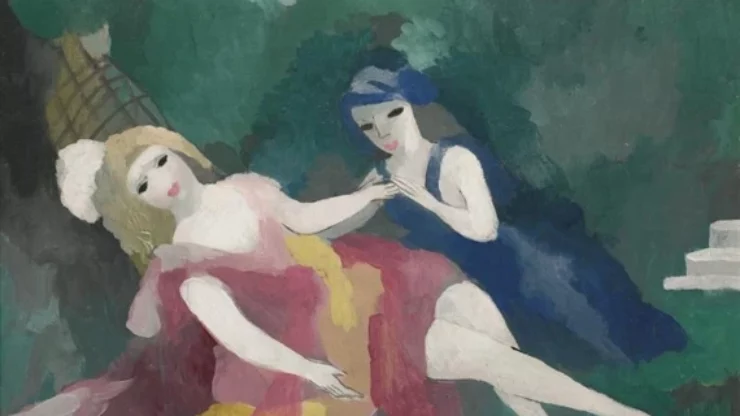So, if you’ve ever heard of Marie Laurencin (1883–1956), it’s probably as the one lady artist hangin’ with Picasso in his early days, painting women all soft and pastel-like. But what’s not so known is that Laurencin was lowkey rebellious when Cubism was all the rage. She was like, “Why should I be painting dead fish when I can paint something way prettier, like girls?”
Subversive Art in a Man’s World
Marie Laurencin wasn’t just about fluffy fairytales. Behind those pink and blue hues was a world where guys weren’t invite. Her art was a sneak peek into the lesbian scenes of 1920s Paris. Cindy Kang, the cool curator at Philly’s Barnes Foundation, spills the tea on Laurencin’s solo exhibition title “Marie Laurencin: Sapphic Paris,” running until January 21. Kang says, “Yeah, it’s all cute and flowy, but there’s a dark and mysterious vibe that goes beyond the pastels.”

Queer Coding and Masterful Strokes
Laurencin was a genius at painting stuff that spoke to her lesbian Paris crew – legends like Gertrude Stein, Coco Chanel, and Helena Rubinstein – but also slyly appeal to male art collectors like John Quinn and Dr. Albert Barnes. She was like the Da Vinci of subtle queer coding.
From Teacups to Masterpieces: Marie’s Journey
Legend has it that Laurencin’s journey into art began with a teacup. Raise by a single mom who was a seamstress, she got her art groove on when her mom ask her to paint a teacup as a teen. Fast forward to 1902, she’s hitting up a drawing school and diving into porcelain painting. But by 1904, she ditches the teacups and enrolls at the Académie Humbert, meeting artsy pals like Georges Braque and Francis Picabia.
Love, Breakups, and War: Marie’s Rollercoaster
In 1907, she links up with Picasso and poet Guillaume Apollinaire – basically becoming a big deal in the “bande à Picasso.” She and Apollinaire were a thing until 1913, and during this time, she’s dropping paintings like “Group of Artists” where she’s the boss lady. But breakups and World War I happen, and Laurencin’s like, “Cubism, you’re killing my vibe!” She breaks away, finds her unique style, and Picasso’s left hanging her portrait “Apollinaire and His Friends” above his bed.
Spanish Vibes and a Color Palette Makeover
During World War I, she gets hitch to a German aristocrat, Baron Otto von Wätjen, and they chill in Spain. Maybe it’s the Goyas at the Prado inspiring her, but Laurencin’s style gets a makeover – thick layers of white paint, pink, blue, and gray hues with a sprinkle of greens and yellows. She writes to gallerist Paul Rosenberg, “Goyas and Velázquezes are closer to our mentality than the boring Mona Lisa.”
Queer Vibes in Subtle Tones
Post-war, Laurencin’s back in Paris, and she’s a free woman in more ways than one. She starts painting “Two Friends,” and her canvas “Women with a Dove” is a sweet ode to her lover Nicole Groult. It’s like a lowkey same-sex couple portrait, but back then, people just saw it as two pals. Smart move, Marie!
Subtle Queer Vibes in a Pink and Blue Palette
Marie Laurencin’s work was a masterclass in subtle queer vibes. Kang says, “It’s very subtle, it’s coded, it’s meant to appeal to many different kinds of audiences. It is a camouflage. And that’s the clue: the over-the-top femininity.” Unlike her contemporary Tamara de Lempicka, who was all about in-your-face sensuality, Laurencin kept it sly.
In a nutshell, Marie Laurencin wasn’t just Picasso’s sidekick – she was a queer pioneer dropping hints in pastels and crafting a world where women ruled. You might need to squint a bit, but once you see it, you’ll get why Marie was the cool cat in 1920s Paris.
